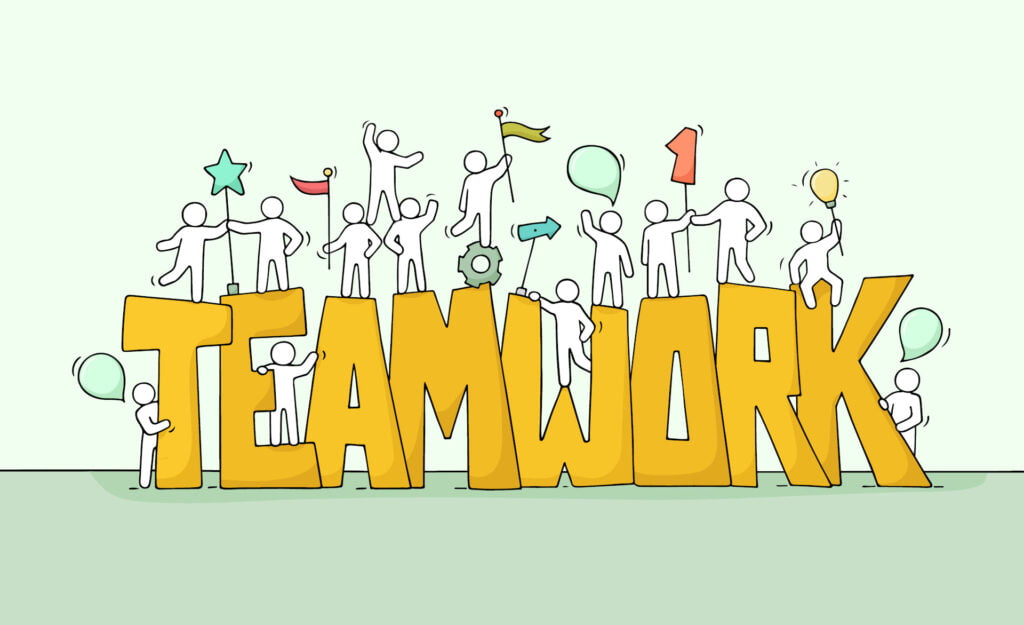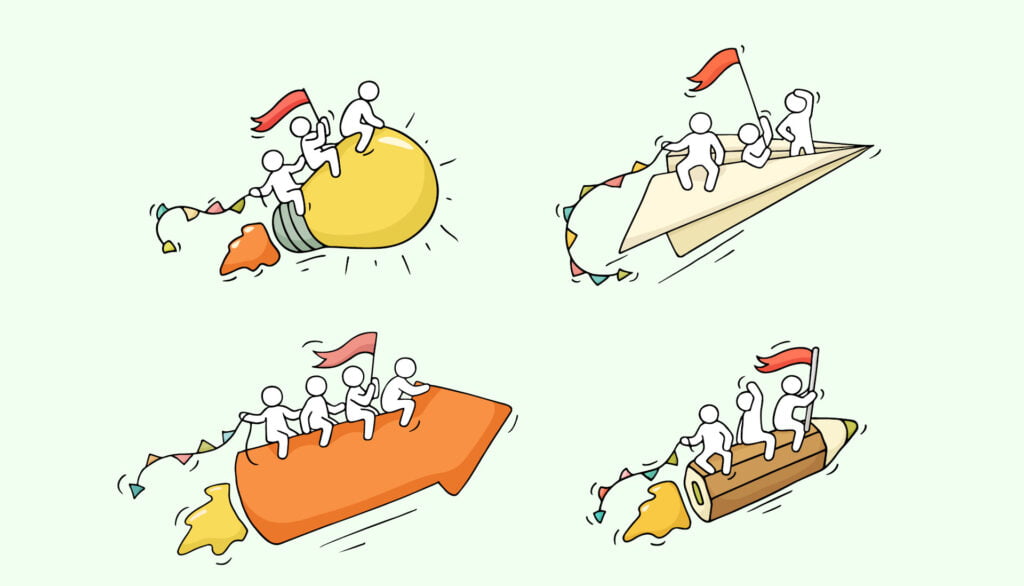
Get work colleagues together to talk team development or group dynamics, and you’ll invariably hear someone utter the phrase: forming, storming, norming and performing and subsequently start an analysis of where particular group is on the scale.
(There is also adjourning, but this is usually left out because everyone forgets about it. Understandable, because the word was added later.)
But ask from whence the benchmark for understanding group dynamics comes and you’ll likely draw blank looks. Or people will grab their phones and search Google. So who came up with the process that is part of our corporate jargon, and why is forming, storming, norming and performing so crucial to understanding how teams function?
Bruce Tuckman, an American psychologist who studied at Princeton, published research on the theory of group dynamics in 1965. He also researched procrastination, but that’s a story for another day (see what we did right there?). The Tuckman model — which has stood the test of time for 55 years — found that groups all functioned, or not, in five stages: forming, storming, norming. performing, and adjourning.
Tuckman’s Stages of Group Development

Stage 1: Forming
There is nothing a like that first team meeting. Sitting around the conference table checking each other out, noticing who’s late, who’s still on their phone, who the chatty one is and who’s a little on the quiet side. People are polite because they are on their best behaviour. It’s much too early to let individual personalities shine — although the patterns are already evident, and snap judgements have already been made.
Wise leaders use this time strategically to establish expectations around the culture of the team. Leaders should involve everyone in the development of the group. Buy-in is crucial at this stage. Other items that need to be discussed openly at the forming stage of Tuckman’s model include conflict resolution, individual and team roles and responsibilities, timelines and goals. Productivity is not a high priority at this stage, rather, the emphasis needs to be on forming a functional team.
Good ground work laid at this stage of team development will minimise future problems.
Stage 2: Storming
It takes time — and effort — for people to get to know each other, and there’s some truth to the saying the familiarity breeds contempt. Spending at least eight hours per day in the vicinity of people who may not be like us can be stressful. Different personality styles, ways of working and managing conflict can cause friction. Even food choices and the smell of someone’s cologne, or a preference for ninjas over pirates, can trigger aggravation and keep tensions simmering.
Working on the task at hand together, with deadlines to meet and projects to deliver means that politeness can often take a back seat. Team members jostle with each other over their own individual priorities and try to figure each other out. Disagreements happen and this is a good thing! Team leaders should check in with their people regularly and take steps to proactively and empathetically address any issues — if the storming stage of development goes pear-shaped, often the project does too.
Stage 3: Norming
Norming is one of the more interesting stages from a team development perspective because its where trust builds and relationships start to bloom. Brief, polite chats in the tea room turn into longer conversations and opinions about work — and the final season of Game of Thrones. Lunches and after work drinks start happening. People start hanging out more because they not only enjoy working together, but they also like each other’s company.
Team building days don’t feel lame or awkward, and team meetings are focused on results and productivity. Issues are discussed in a mature and empathetic way, and solutions to challenges are found. However, if new members are recruited to the team, more storming and norming will need to be done as adjustments to group dynamics naturally occur.
Groups can go backwards and forwards between the storming and norming stages of team development as teams adjust to new requirements.
Stage 4: Performing
In Tuckman’s stages, performing is the sweet spot. The team has been working together for a while and things are humming along nicely. Members understand each other’s work styles. Promises made and kept. Tough but necessary conversations are handled with aplomb and empathy. Compromises are made. Deadlines have been met. Celebrations have been had. What’s important is that the group trusts each other. And they deliver.
The team is motivated, skilled and familiar with the project and how valuable their contribution is to making it all happen. Conflict, if it occurs is easily resolved, and frank and fearless conversations are the rule, not the exception. The project is a success!
Stage 5: Adjourning
Tuckman added the adjourning stage in 1977 — 12 years after the original research.
The project has been completed, so the team adjourns to work on other jobs or in other roles. Members may mourn the end of the project because they have forged close relationships and bonds that have become important. There is also a sense of uncertainty that comes with the windup of a job, and good leaders will help their teams work through this stage with empathy.
How to use Tuckman’s model to develop your team

Strong, effective teams rarely just happen. If you throw a bunch of people together without any intervention in how they should work, generally you get a social-science experiment. Science experiments are necessary, of course — and fun — but when time, cost and quality is an issue, it’s not the best way to manage a team. Talent does not trump chaos.
Good leaders who understand what constitutes the five stages of group development — and use Tuckman’s model to cultivate their teams — increase the project’s success rate exponentially. Leadership is everything in team development because leaders set the tone and manage the culture of their team. Attitude always reflects leadership.
So if you’re new to leading teams, or the team you’re leading isn’t functioning well, what should you do?
1. Mission critical
Without a clear mission, your team won’t understand its purpose. Those big questions: Why are we here? What do we want to achieve? Why are we doing what we’re doing? are crucial to your team knowing that the work they are doing is meaningful and their individual role has a point. In any conflict, come back to your mission. It will remind your team that something bigger than them as individuals is at stake.
Your mission is your road map.
2. Embrace conflict
We’ve been conditioned to the idea that conflict is negative and damaging. Conflict can be positive and enhance creativity, as well as encourage innovation and new ways of working. It just depends on how it is handled.
Conflict that is respectful, where everyone’s view are heard and that aims to solve the matter at hand — without personal low blows — will build trust among your team members. You might need to provide training to work on soft skills and empathy, but it will be worth the effort.
3. Manage the culture
Establish the culture of your team early and know how to discipline an employee. Poor behavior that is tolerated continues. Reward and incentivize what you want to see, and do something about the behavior you don’t — and do it early. Ensure you don’t impose rules on your team — you can certainly guide and facilitate, but the buy-in of your group is needed otherwise they won’t commit — and they’ll find creative ways to circumvent rules they don’t agree with, or find unreasonable.
Agreed rules might range from no phones in meetings to sharing your monthly work plan with your colleagues. You might want to discuss expected and punctual attendance at team meetings or conflict resolution or tracking time using Traqq software for visibility and accountability. Rules are situational and can change. Just remember — manage the culture or it manages you.
4. Self-managed teams
Teams that are self-managed, where the team leader facilitates the project rather than being the “boss” via positional power is an ideal state that can be achieved with some effort. Connected autonomy makes for a happier workforce overall — and a more productive team.
With remote work and freelancing more common and on the increase, and colleagues not often in the same city, let alone time zone, teams can still function well — but there needs to a visionary manager who understands human nature — and a little technological intervention.
Traqq is a desktop application that is one of the easiest and simplest ways to track your time and productivity, and that of your team. Suitable for freelancers or large multi-national teams, activating your account is free and includes access to the full suite of tools and features, including encrypted data and ethical tracking. Traqq is a time tracking software free for anyone to use. You can download it and access all its features at no cost.
